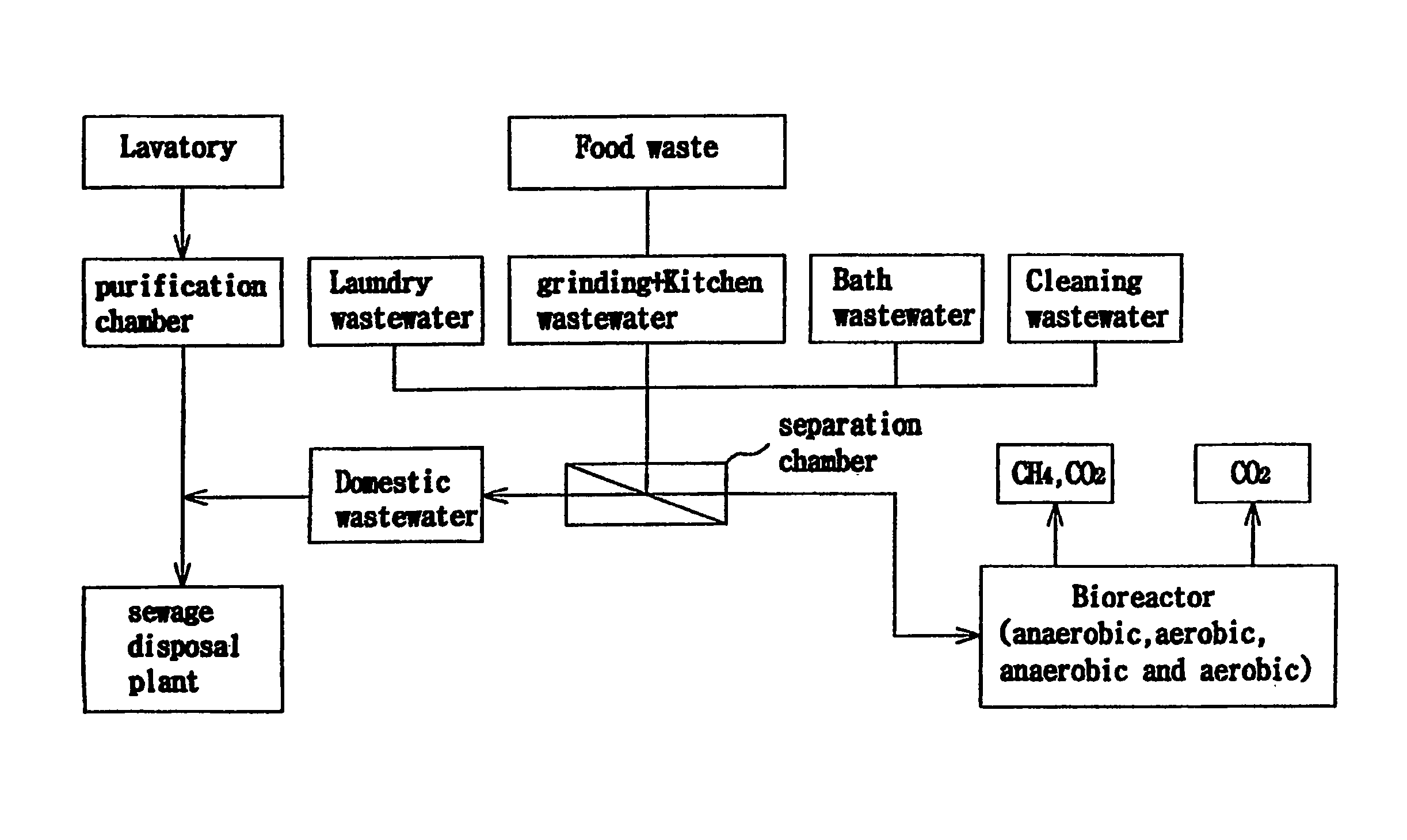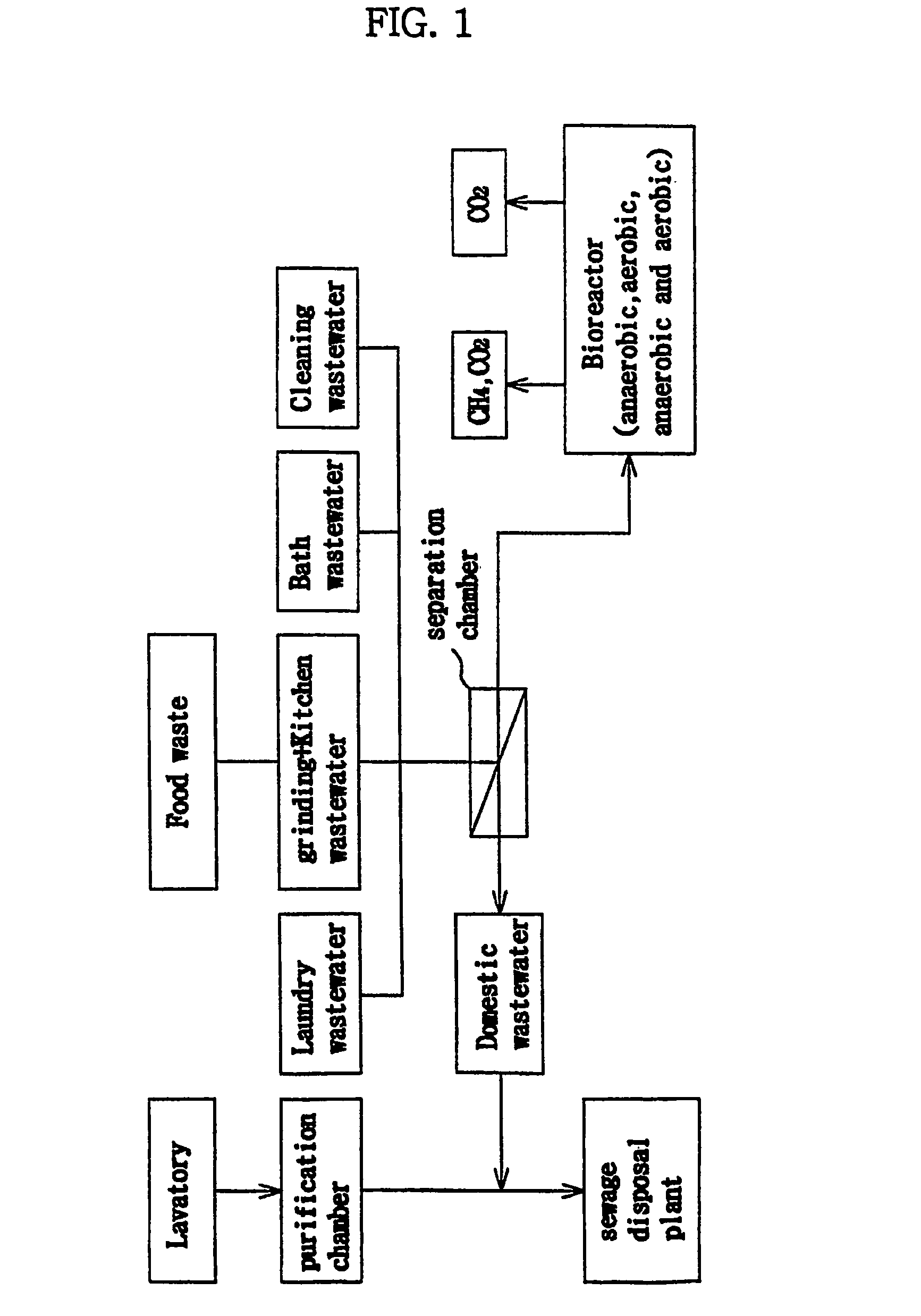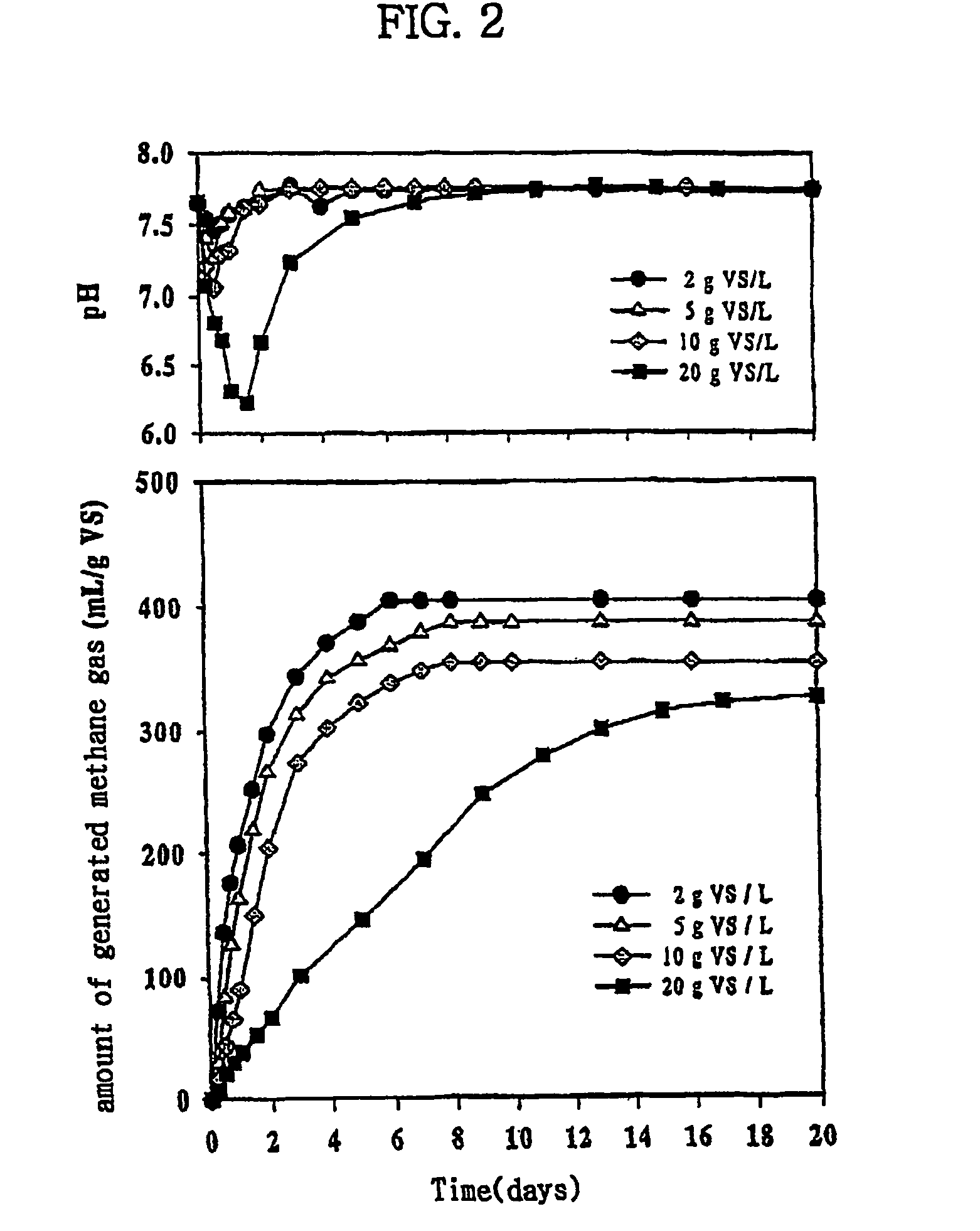On-site treatment method of food waste generated from collective residence or institutional food service facilities
a food waste and treatment method technology, applied in biological water/sewage treatment, filtration separation, separation processes, etc., can solve the problems of unpleasant odor, difficult treatment, and inability to predict the effect of salt content in compost on soil, so as to reduce the load of sewage treatment plants
- Summary
- Abstract
- Description
- Claims
- Application Information
AI Technical Summary
Benefits of technology
Problems solved by technology
Method used
Image
Examples
example 1
[0065]To an anaerobic digestion reactor made of iron and having a volume of 2 L, food waste generated from dining halls of KAIST used daily by 1000 persons was charged in the amount of 2 g / L by dry weight.
[0066]The pH in the reactor was adjusted to 7.65 using NaOH, and the temperature was raised to 35° C., followed by sealing the reactor and forming a nonaerobic atmosphere therein.
[0067]The pH in the reactor was determined by a pH meter and the generated methane gas amount was measured with the use of a gas meter.
[0068]The results are given in Table 1, below.
example 2
[0069]The present example was performed in the same manner as in the above Example 1, except that food waste was charged to the above reactor in the amount of 5 g / L, instead of 2 g / L, on the basis of dry weight.
[0070]The results are presented in Table 1, below.
example 3
[0071]The present example was performed in the same manner as in the above Example 1, except that food waste was charged to the above reactor in the amount of 10 g / L, instead of 2 g / L, on the basis of dry weight.
[0072]The results are presented in Table 1, below.
PUM
 Login to View More
Login to View More Abstract
Description
Claims
Application Information
 Login to View More
Login to View More - R&D
- Intellectual Property
- Life Sciences
- Materials
- Tech Scout
- Unparalleled Data Quality
- Higher Quality Content
- 60% Fewer Hallucinations
Browse by: Latest US Patents, China's latest patents, Technical Efficacy Thesaurus, Application Domain, Technology Topic, Popular Technical Reports.
© 2025 PatSnap. All rights reserved.Legal|Privacy policy|Modern Slavery Act Transparency Statement|Sitemap|About US| Contact US: help@patsnap.com



